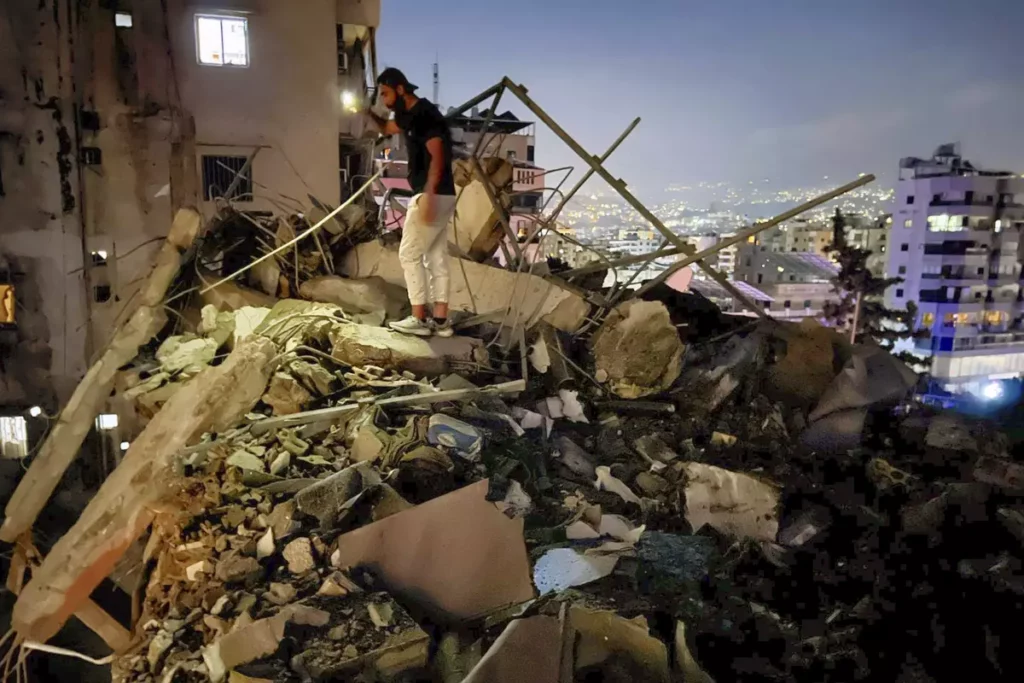On Monday, August 5, Israeli warplanes conducted fake air raids over Beirut and its surroundings, south Lebanon, and other areas, breaking the sound barrier and creating loud sonic booms across the country.
Such operations have been part of a systematic strategy by Israeli forces to trigger fear in Lebanon’s population amidst concerns of an all-out escalation of the conflict and the targeting of densely populated areas, such as the capital Beirut – something Israeli forces have recurrently done throughout the last months of conflict.
On Thursday, August 1, an Israeli strike targeted an inhabited house in the town of Shameh in south Lebanon, killing four individuals and injuring five others, one of whom is in critical condition. However, the total death toll remains unknown before the completion of DNA tests on some body parts.
The strike comes one day after the head of Hamas’s political bureau, Ismail Haniyeh, was assassinated in the Iranian capital of Tehran.
It also comes two days after an Israeli strike hit a residential building in the municipality of Harek Hreik in the southern suburbs of Beirut, killing seven individuals, including five civilians and Hezbollah commander Fouad Shukr, while also injuring at least 74 individuals.
Ceasefire or All-Out Escalation
As confirmed by United States President, Joe Biden, the assassination of Haniyeh means the assassination of Hamas’s main contact point for ceasefire negotiations.
Israel has been undermining ceasefire negotiations since the beginning of the conflict, and the assassination of Haniyeh represents another step in the same direction.
Concerns of an all-out escalation of the conflict have considerably risen after the series of strikes, with numerous embassies changing their travel advisories to Lebanon and flights being considerably disrupted.
With Gaza, Lebanon, Syria, Iraq and now Iran being impacted by Israeli strikes, political readings have suggested that this paves the way for a “unification of fighting fields” and the break-out of a regional war.
A wider regional coordination of war efforts would also mean that the United States would intervene more directly in the conflict. It is reported that the US Navy has assembled 12 warships and 4,000 marines in the Middle East, including the amphibious assault ship USS Wasp and the aircraft carrier USS Theodore Rosevelt.
Another Reading
On the other hand, another reading of the conflict suggests that the targeting of two officials from Hezbollah and Hamas might be the prelude for an upcoming ceasefire, whereby the objective of Israeli authorities is to claim to have achieved military objectives and save the government’s reputation amidst internal and external pressures and criticisms towards Netanyahu’s government for its failure to achieve their unrealistic objective of “eradicating Hamas.”
As such, the killing of two high-ranking officials from Hamas and Hezbollah would be considered a military objective achieved and a more convincing war “balance sheet.”
However, yesterday’s Israeli strike on the town of Shameh suggests that in the meantime, while the potentials of an all-out regional escalation or a nearing ceasefire are examined, the Israeli assaults on civilians in Gaza, Lebanon and the region will continue.
